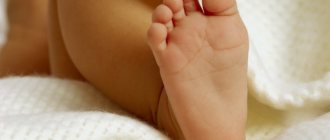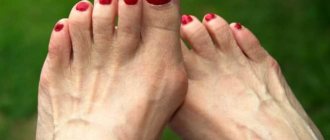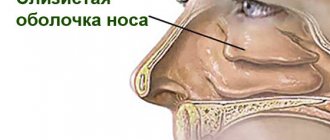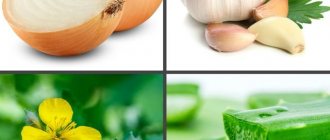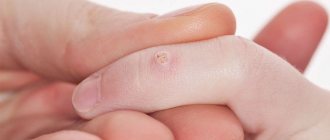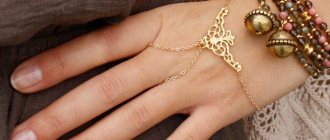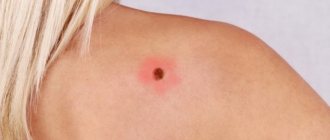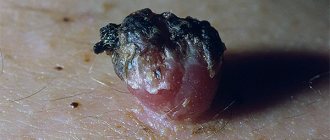11/29/2020 110 Hands and wrist
Author:ProSpinu
Growths on the joints of the fingers are formed as a result of destruction or inflammation of the cartilage between the phalanges. Joint deformity is manifested by swelling and swelling. Joint fluid, pus, or other harmful accumulations collect under the skin. Lumps on the fingers can be painful or non-painful, but they are always a symptom of diseased joints. To prevent the condition and appearance of your hands from deteriorating, we advise you to consult a doctor as soon as possible.
Why do they appear
The causative agent of warts is the human papillomavirus; today scientists identify 120 types of this virus .
Once in the body, it can remain in the incubation period for a long time.
Reveals itself in weakened immunity:
- improper diet;
- constant presence in stressful situations;
- hypothermia or, conversely, sunstroke;
- long-term use of various medications that are taken for other purposes.
The virus enters a person through ordinary household contact (handshake), after using personal hygiene items of an infected person.
It can easily be contracted in public places by touching a sink, faucet, handrail or railing. Microbes penetrate through injured skin.
When should you see a doctor?
It is better to remove any growth, even if it causes cosmetic discomfort.
You should see a doctor immediately if the wart:
- began rapid growth;
- changed color - to crimson-red with dark edges;
- pus or blood constantly appears on the surface;
- cracks and redness around the growth hurt and cause itching;
- Serious damage to tumor tissue occurred.
The doctor will order an examination and, if necessary, quickly remove the tumor.
Classification of warts on hands
In medicine, there are several types of skin growths. They differ in shape, color, and depth of penetration into the dermis.
Some tumors are easy to treat, while others are quite difficult to cure.
Some warts affect children, others - adolescents, and others - elderly and elderly people.
Common warts
Also known as vulgar. They usually appear in young children and primary schoolchildren, but can also affect older people. They make up more than seventy percent of the total number of warts.
Localized on the hands, fingers, skin between the fingers, and on the face. Due to their unaesthetic appearance, they cause a number of complexes.
The shape of condyloma vulgaris is a compacted round node. Sizes range from pinhead to pea-sized. The color of the new growths is flesh-colored.
Most often they appear in bulk ; single lesions are extremely rare. Among the scattering of neoplasms there is always maternal condyloma. This is the largest growth; after its removal, all other neoplasms will go away on their own.
Flat neoplasms
They affect young people , from 10 to 25 years old, so they are often called juvenile. They form on the face, torso and any other parts of the body, but most often on the hands.
The size does not exceed 5 millimeters in diameter. The growths appear in the form of dense nodes. The shade can vary from flesh to yellowish. Skin deformations have a flat surface, this is a characteristic feature of this type of wart.
Neoplasms often appear during hormonal changes in adolescents; they can occur after stress or when the endocrine system malfunctions. Flat growths are easy to treat.
Horny warts
These growths occur on the fingers, toes, palms, and soles and are often called palmar and plantar lesions.
People call such growths “chicken butts” or spines.
Palmar warts are easily confused with calluses, which is why they are sometimes called dry, internal and subcutaneous warts. They have a flat shape, sometimes slightly convex.
The dimensions do not exceed one centimeter in diameter, skin lesions are localized in large numbers. The roots go deep into the dermis of the skin.
In the middle of the formation, you can see a papilla; clogged capillaries (small black dots) are visible on the surface of a well-washed wart. Horny growths cause pain.
With constant friction, there is a risk that the formation will become malignant.
Senile neoplasms
In medical practice they are called seborrheic keratoma. This is a benign tumor that occurs most often. Neoplasms appear in older people. The pathogenesis is not fully understood, but senile warts are believed to be independent of the papilloma virus. They are formed from keratinocytes (cells of the basal layer of the epidermis).
The shape of the keratome can be convex, flat or papillary. The wart may be pink, yellow or dark. But initially it is always light yellow.
The diameter of the keratome is from 2 millimeters to 3 centimeters. But sometimes there are also large warts, 4–6 centimeters in diameter.
There are single neoplasms, but most often multiple. Warts are localized on the neck, torso, face, legs and arms, and never form on mucous membranes.
Seborrheic keratomas usually appear after age 50 . In forty percent of cases there is a genetic predisposition. Over time, warts take on a rough shape and keratinized particles appear on them.
Seborrheic keratoses develop slowly over decades. This type of tumor can develop into a malignant tumor under the influence of various factors.
An ordinary wart. The word “wart” comes from the fact that the growth looks like a “beard.”
A vulgar wart on the bend of a finger.
Horny or palmar wart. Sometimes such warts are popularly called chicken or plantar warts
Flat wart
Senile seborrheic neoplasms
Periungual growths
Neoplasms have deep roots and affect not only the skin up to the nail, but also the skin under the nail bed. Skin deformations are painless, but they look extremely unsightly and give the hands an unkempt appearance. In addition, there is a high risk of damage and the possibility of human infection with other diseases.
Neoplasms negatively affect the nail plate. They deform the nail, making it weak and thin.
Symptoms
The growths themselves visually resemble a bump. When the formation has just appeared and remains small, it is rarely accompanied by painful manifestations. Pain and signs of inflammation occur when the growth begins to increase.
Visually and to the touch, the bumps are:
- solid, with crystalline formations inside;
- soft and shiny;
- dry and rough.
Associated symptoms after the bumps appear may be as follows:
- Pain syndrome. It intensifies with finger movements and palpation of the growth. The pain occurs throughout the exacerbation, sometimes getting worse at night. Painful sensations of a pressing, tight, sometimes pulling nature.
- Poor mobility of sore fingers. Any movement causes clicks and crunching sounds. There may be an unpleasant rubbing sensation, as if there is sand inside the buds.
- Signs of an inflammatory process. The lump turns red, swells, and the pain is excruciating. The growth is hot to the touch, although the overall body temperature does not increase.
- General manifestations of intoxication of the body. Weakness, fatigue, fever and increased sweating. The patient may feel nauseous and have bouts of vomiting.
How to recognize them
The main diagnostic method is visual inspection of skin deformations . If necessary, the patient is tested for the presence of papillomavirus in his blood; in rare cases, a biopsy is required.
Condylomas have the following symptoms:
- no pain when pressing on them;
- there is no skin pattern on the wart;
- the presence of black dots on the growth (these are clogged capillaries);
- When mechanically damaged, the wart begins to bleed.
Neoplasms are similar in symptoms to a number of other skin growths: molluscum contagiosum, epidermal wart nevus, basalioma.
Can the growth hurt when pressed?
If the formation is not damaged, not injured, and there is no constant mechanical impact on it, it should not hurt.
But in some cases this happens - when pressed, a person experiences discomfort, throbbing pain, and even sees a small amount of blood and pus released from the tissue of the growth.
There can be many reasons, the main ones are damage or infection of the wart, malignancy of the growth, or constant mechanical impact on the formation - for example, with a pen, a bag strap or a tool.
By secret
Have you ever tried to get rid of papillomas? Judging by the fact that you are reading these lines, victory was not on your side.
And have you already thought about laser removal or other procedures? This is understandable, because papillomas are a discomfort, a minus for your appearance and a risk of developing cancer.
Approach the issue wisely, influence the entire body, and not just the symptoms of the disease. For your convenience, we have attached a link to the official website
manufacturer, where
PapillOFF.
can be purchased on sale.
To learn more
Diagnosis of a painful growth
During the examination, the doctor will conduct a visual examination of the formation and prescribe examinations such as:
- dermoscopy - examination of the growth under a microscope;
- cytological examination - a scraping is taken from the surface of the wart and then studied in the laboratory;
- histological examination.
After the study, the doctor will either decide together with the patient to remove the tumor, or offer to monitor the development - if there is no risk of the tumor degenerating into a malignant one.
Useful video
The video once again talks about the types of warts, including those on the hands:
Warts on the hands occur in a large number of people of different genders and ages. Anyone can become infected with them. If neoplasms appear, you should consult a doctor and undergo treatment. Personal and regular hygiene and a healthy lifestyle are a preventive measure against warts.
If you find an error or traces of code (for example, individual characters >, ],=...), please select a piece of text and press Ctrl+Enter.
Treatment methods
Many older people make the mistake of relying on medications for therapy. Medicines help relieve symptoms - pain and inflammation, but nothing more. To treat joints, you need to improve blood circulation in them. This requires special gymnastic exercises for the fingers and their massage. You need to reduce the stress on your hands, reconsider your attitude to nutrition and bad habits.
Prevention
To prevent bumps from starting to grow, and inflammatory exacerbations from occurring again, you need to:
- eat less meat products;
- reduce household loads on the phalanges associated with friction;
- minimize alcohol in your life;
- quit smoking;
- perform simple exercises and self-massage of fingers;
- undergo a course of treatment with chondroprotectors.
Simple self-massage of hands:
- rub your palms against each other so that they warm up;
- take the finger of the opposite palm in your hand and rotate it with your wrist;
- quickly bend and straighten the phalanges, without clenching tightly into a fist;
- bring your palms together, apply mutual pressure for two minutes;
- Perform the previous exercise again, but your hands should now touch only your fingertips.
Traditional methods
To treat growths on the phalanges, the following medications are required:
- Non-steroidal anti-inflammatory drugs - suppress inflammation, relieve pain. It is necessary for the inflammatory process to stop destroying joint tissue. They have a bad effect on the gastrointestinal tract, but modern NSAIDs - coxibs - do not have this disadvantage.
- Corticosteroids are hormonal anti-inflammatory drugs. Prescribed only for severe pain. They have a large number of contraindications associated with the effect on the human endocrine system. Quickly eliminate the inflammatory process and pain, protect the joint joint.
- Chondroprotectors are drugs that regenerate the joint. The cartilage tissue is filled with new dense substances and becomes elastic again. The bones no longer deform it, and it is more difficult for infections and harmful substances to destroy the cartilage. It must be taken during treatment courses; a one-time use will not bring any effect.
- Antibiotics - if the inflammation is infectious in nature. Even if you are sure that you have an infectious inflammation, do not choose antibiotics on your own. They can only be prescribed by a specialist after conducting accurate tests. Blood values can indicate what type of infection is affecting the fingers. Confident that the antibiotic will be able to destroy the pathogen, the doctor prescribes the drug.
- Uricosuric drugs. Used when you need to remove uric acid from a joint.
When the lump cannot be eliminated using conservative methods, the doctor prescribes surgery. Rehabilitation may be long, but after this the patient’s quality of life improves.
Chondroitin (94 RUR)
Diclofenac (RUB 134)
ethnoscience
You should be careful when choosing home methods to treat joint growths. So, without knowing the cause of their occurrence, you can harm yourself and complicate the progression of the disease.
An important point is that if signs of inflammation are noticed, the growth should not be heated. Until the inflammatory process ends, heat will only cause harm. But when the tissues heal, folk warming remedies will help speed up this process. Let's look at effective recipes against growths:
- Mix 10 ml of iodine and half an aspirin tablet. We use it as an ointment, cover the phalanx with polyethylene, and fix it with several layers of bandage. We go to bed with this compress.
- Place five burdock leaves over a pan of hot water until they steam. You can replace burdock with cabbage, but you don’t need to keep them over boiling water. We smear our fingers with sunflower oil, wrap them in steamed sheets, and secure them with a gauze bandage. Keep the compress for 2-3 hours.
- Grind the horseradish and steam over boiling water. We place the resulting slurry in natural dense fabric. We fix it on the phalanx and endure until a strong burning sensation appears.
- Mix a teaspoon of iodine, ammonia, honey, glycerin and medicinal bile. Leave for one to two weeks, stirring occasionally. Lightly heat the tincture and saturate a paper napkin with it. Place it on your finger, secure it with a bandage, and go to bed.
- Cook birch leaves in boiling water for several minutes. In case of exacerbation, then cool the water to lukewarm. For chronic bumps, you can use slightly hot water. Keep your fingers in the broth for 10-20 minutes.
- Grate the green potatoes without peeling them first. Heat the mixture in boiling water, drain the water. Cool the potatoes to body temperature and lower if the disease is acute. We fix the compress and go to bed.
Hernia
It feels like a soft protrusion under the skin, which can appear during exercise and disappear completely when lying down or at rest. A hernia forms in the navel, postoperative scar on the abdomen, in the groin, on the inner surface of the thigh. The hernia may be painful when palpated. Sometimes you can push it back in with your fingers.
A hernia is formed by the internal organs of the abdomen, which are squeezed out through weak spots in the abdominal wall during an increase in intra-abdominal pressure: when coughing, lifting heavy objects, etc. Find out whether a hernia can be cured using traditional methods, and why it is dangerous.
Lipoma (wen)
Lumps under the skin most often turn out to be lipomas. These are benign, completely safe tumors from fat cells. Lipoma can be felt under the skin as a soft formation with clear boundaries, sometimes with a bumpy surface. The skin over the lipoma is of normal color and density, easily folded.
Most often, lipomas appear on the scalp, neck, armpits, chest, back and thighs. When they reach large sizes, they can cause pain by squeezing neighboring organs or muscles. Find out more about how to get rid of lipoma.
Lump under the skin after vaccination
Vaccinations are carried out for all people, especially in childhood. While protecting themselves from infections, children often experience complications after receiving a vaccine. Redness forms at the site of the vaccination, the subcutaneous tissue thickens and hurts.
You can apply a cold compress to the tight area to relieve pain and redness. Hydrocortisone ointment helps to remove the compaction under the skin after vaccination. By lubricating the injection site, the hard lump at the injection site can quickly disappear.
If you notice a ball-shaped lump under the skin, do not look for the cause on your own - consult a doctor immediately.
Possible complications and precautions
Until the wart is removed, it is worth taking a number of measures:
- do not injure education;
- avoid friction at the site of the build-up;
- Monitor the condition of the wart carefully in order to notice changes in time.
If cracks or slight damage to the surface appear, it is necessary to treat the wound as soon as possible, make a soda bath for your hands before going to bed and tightly wrap the sore spot with a bandage.
If an infection gets into the wound, this can threaten not only a serious inflammatory process in the body, but also the degeneration of the tumor into a malignant one.
What to do with painful formations?
First of all, you need to understand what causes discomfort in the growth. If this is regular friction, eliminate it; if it is damaged, treat the wound with hydrogen peroxide and apply a bandage to the inflamed area.
Important!
You should not try to remove a painful growth on your own - if the formation turns out to be malignant, then exposing the tumor to aggressive acids can contribute to a sharp growth of the tumor.
It will be more difficult to cure it in the future.
